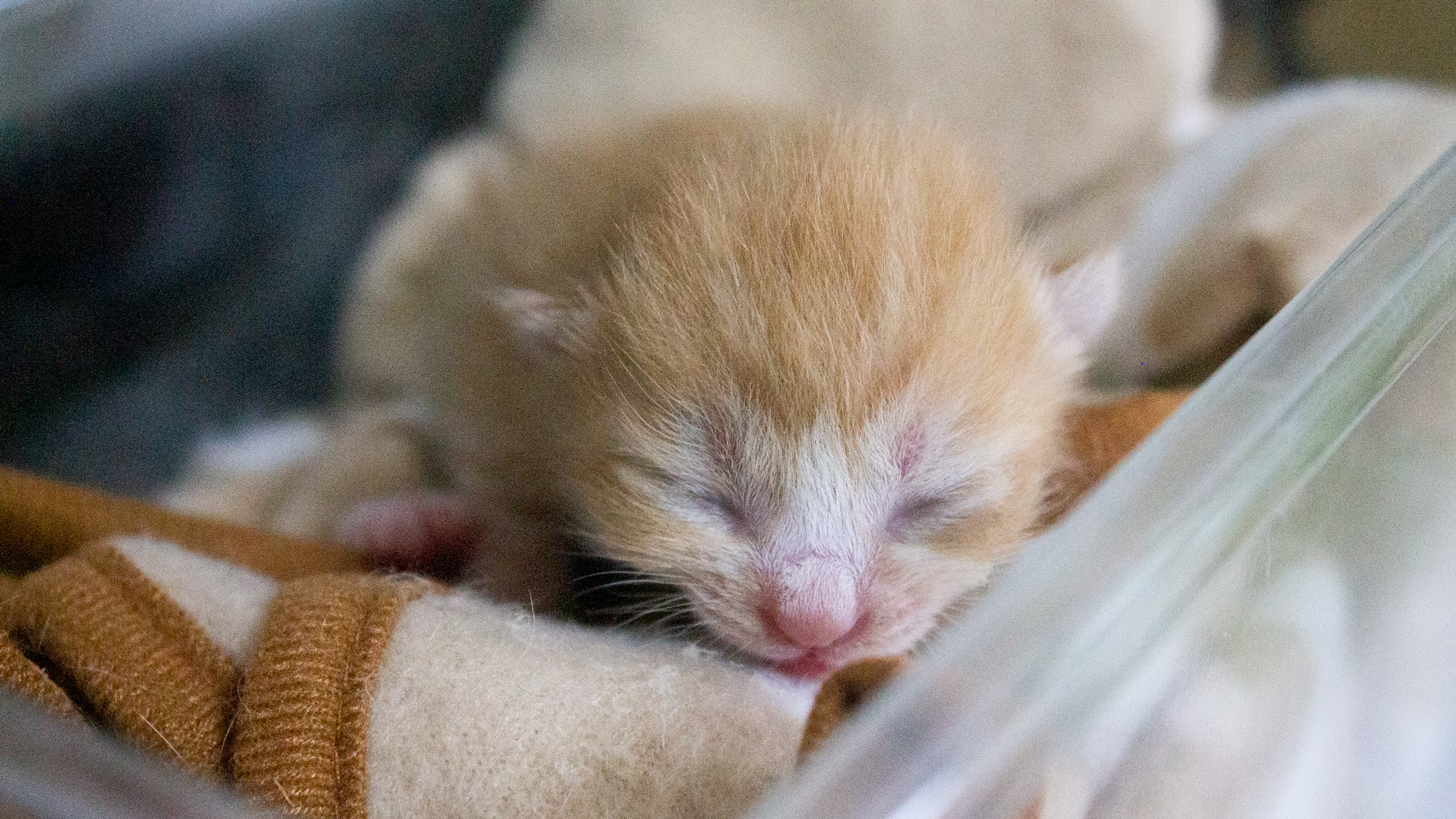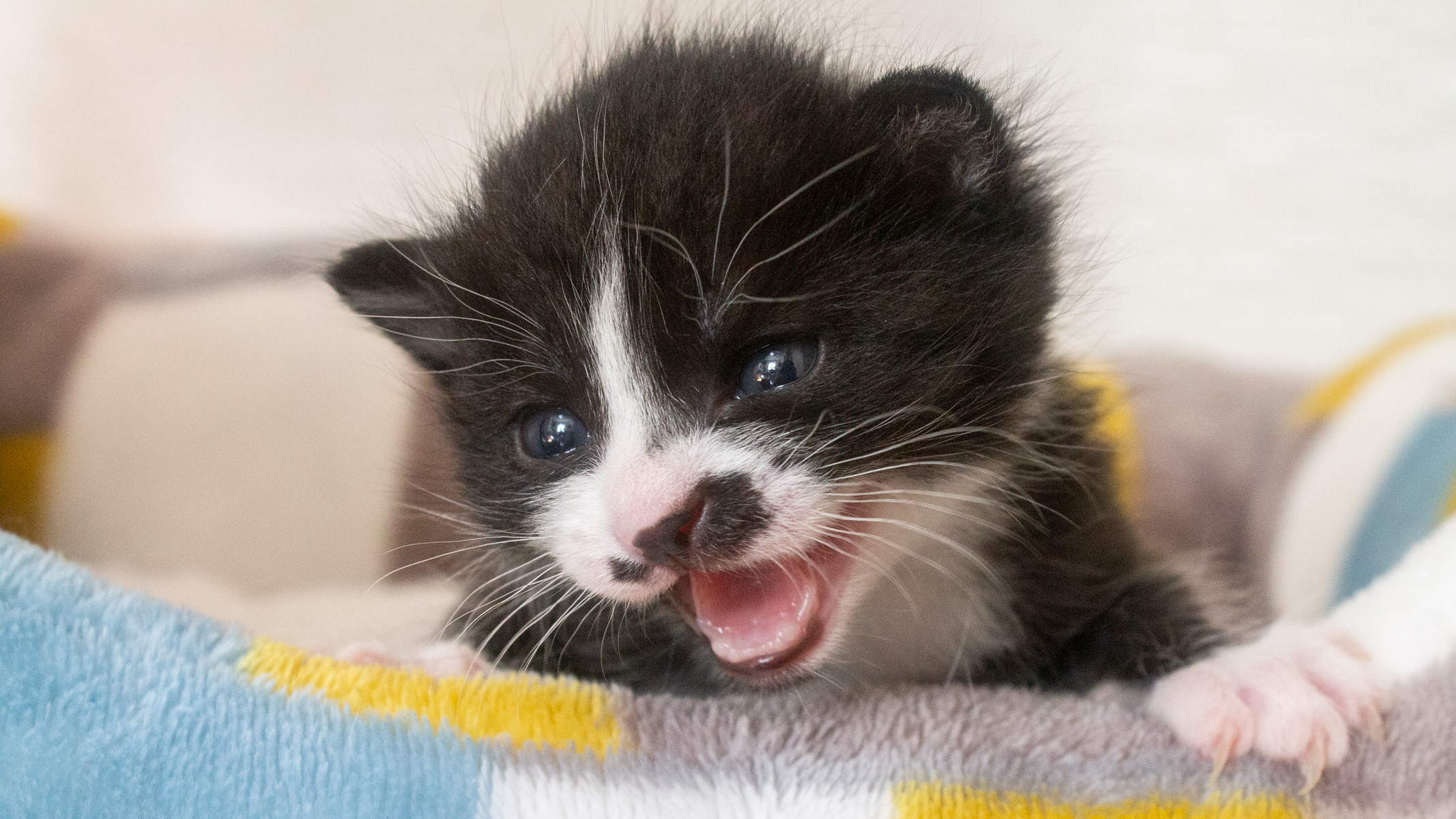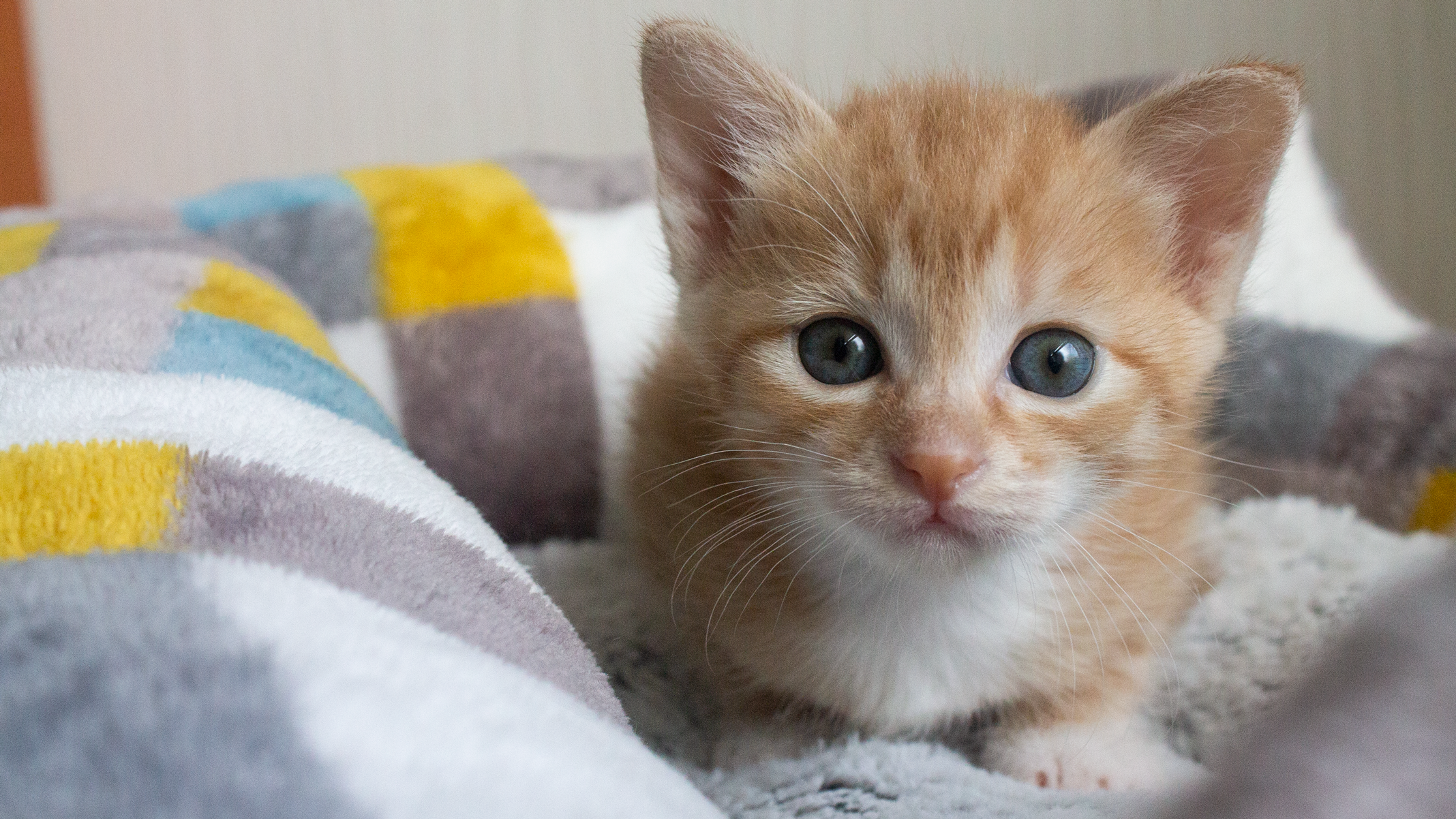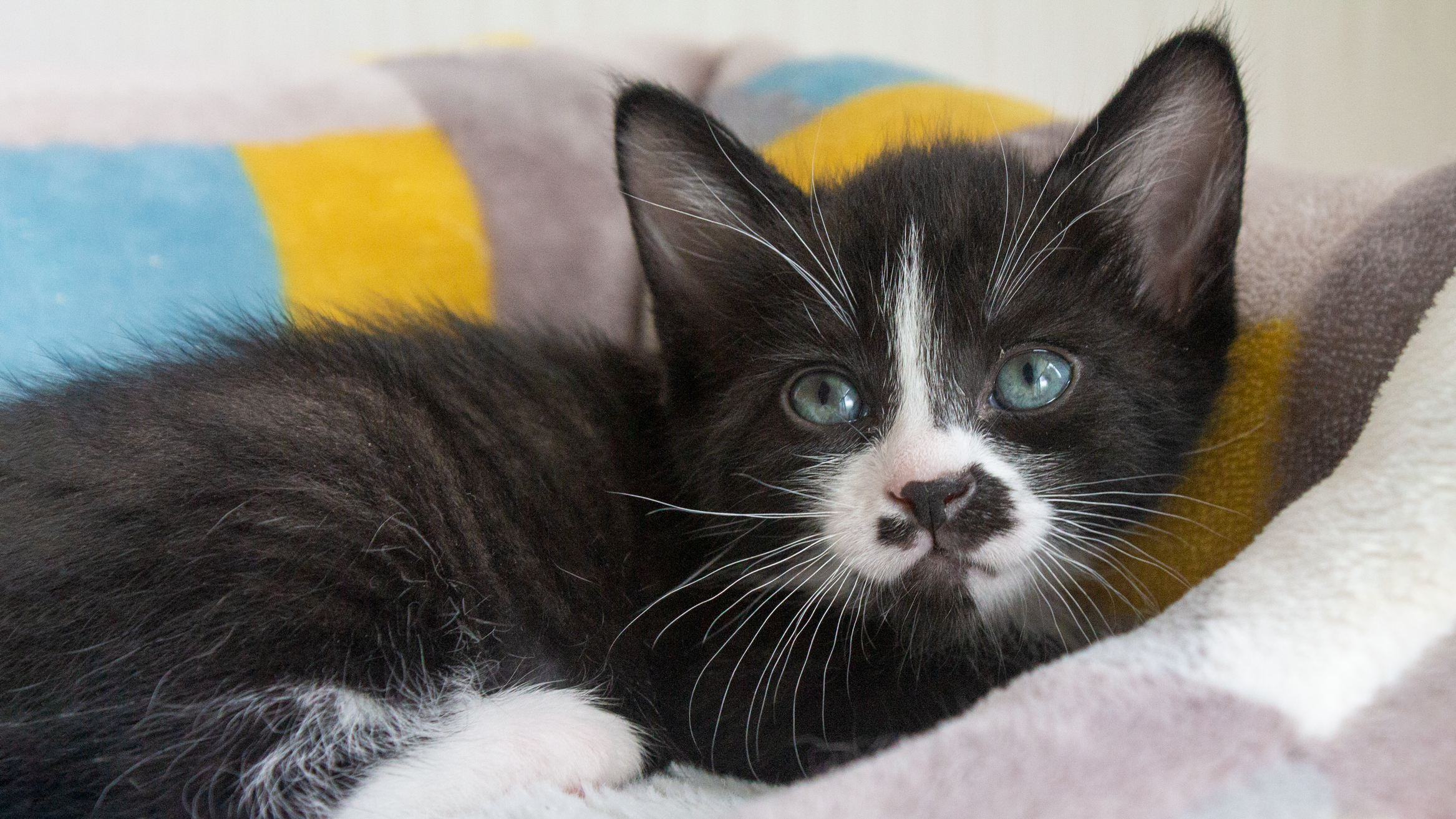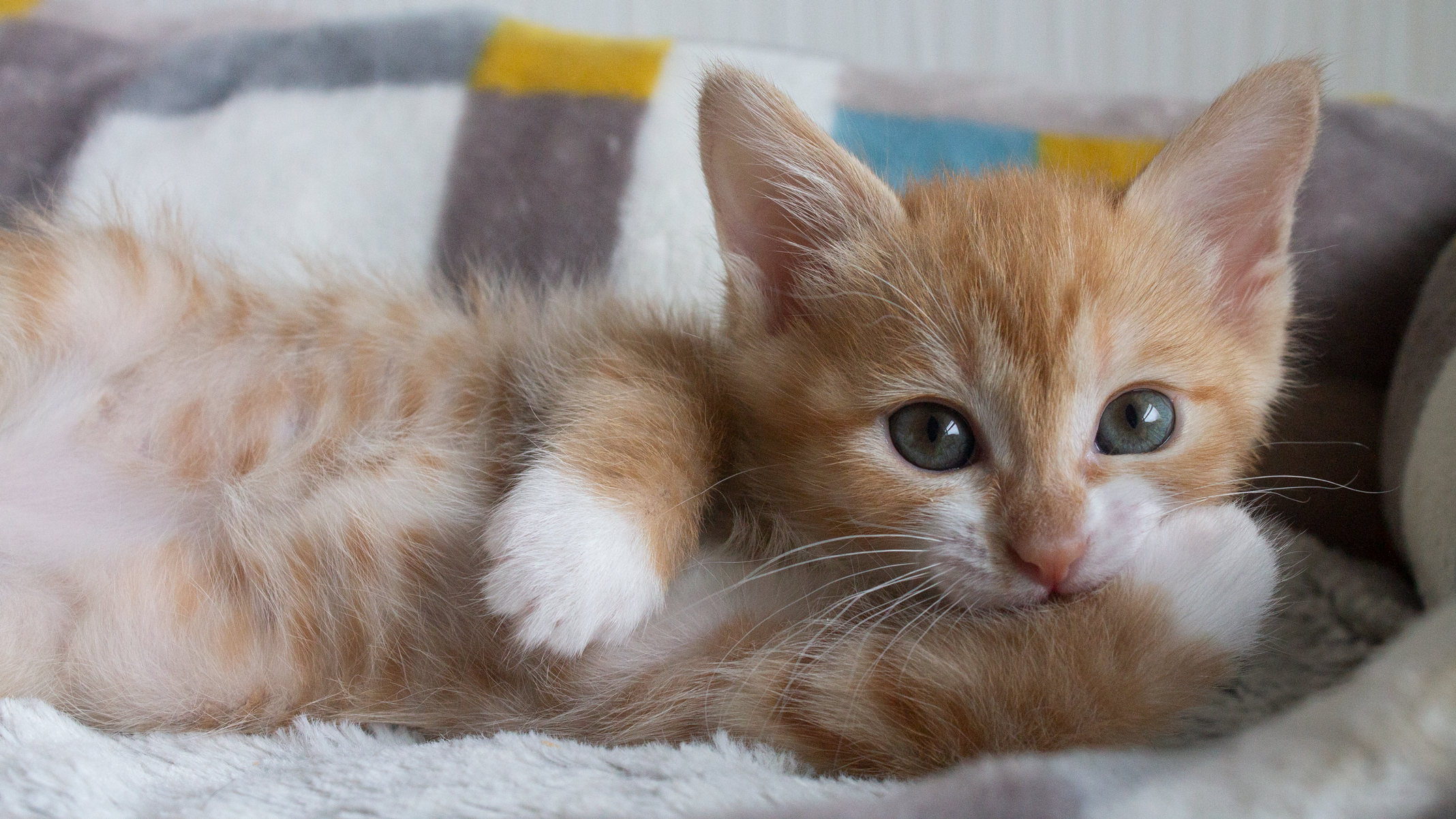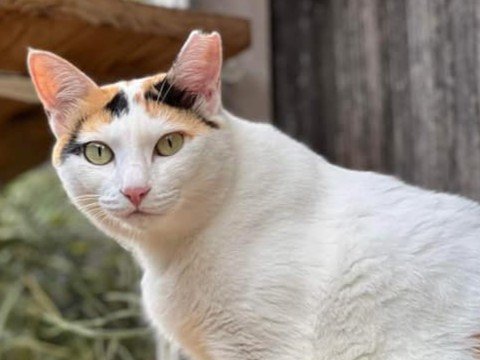
How do I care for kittens?
Kittens can be very difficult to care for depending on whether or not their mother is with them and how old they are. This guide will assume the kittens have been orphaned and are completely dependent on your care. (If possible, however, always try to go back and catch the mother cat, not only because it would make caring for nursing kittens much easier; getting her fixed will ensure you won’t have to deal with another litter of her kittens in another few months.)
Basic Neonatal Kitten Care
Reasons to Bring Them to the Vet:
Due to the fragile nature of kittens, small fluctuations in their appetite, weight, and activity levels can end up being huge issues if not quickly addressed. If you notice dramatic changes in any of the above, take the kitten to the vet.
You should immediately bring a kitten to a vet if they are acting lethargic and/or unresponsive. Kittens crash fast and without warning, so they should be monitored closely.
Diarrhea can quickly dehydrate and kill young kittens, so take them in for vet care if you notice them having bowel issues. Diarrhea can be indicative of internal parasites, food allergies, etc., so it’s important to get the kittens checked out.
If the kitten is failing to gain weight or losing weight, they need to see a vet ASAP. The difference of a few grams of weight over several days might not seem like much, but it is a huge deal, especially for neonatal babies.
It’s a big issue if kittens refuse to drink from a bottle or from a syringe since they need constant meals when they’re young. These kittens may need to be tube-fed, a life-saving skill that only a vet can teach you.
Initial Care:
Prioritize stabilizing the kitten. If they are cold and unresponsive, warm them up with a heating pad or a towel-covered hot bottle of water.
Never feed a cold kitten. Make sure a kitten is warm and alert before offering them food. Giving a cold, unresponsive kitten food/milk/water can cause them to choke and potentially die.
Once they are stable, bathe them if they are dirty or infested with fleas. You’ll want to work quickly so the kitten doesn’t get cold.
Have the tap running to a comfortably warm temperature and keep it running so you don’t have to keep adjusting the water. Quickly wet the kitten’s body without getting their face. Using unscented dish washing liquid or cat shampoo, make a ring of suds around their neck. This prevents fleas from jumping onto the kitten’s head. The soap will help suffocate and kill the fleas.
Suds up the kitten’s body quickly, picking off any visible fleas and crushing them between your nails to kill them. You can also use a flea comb to get rid of them. After their body is washed, carefully wash their face, taking care not to get soap or water into their eyes or ears.
Rinse the kitten with warm water and quickly wrap them up in a towel to dry off. Try to get them as dry as possible, then put them into a safe spot with a heat source, such as a heating pad. Monitor them closely to make sure they don’t get too cold.
Feeding Kittens Milk:
Kittens that are 0-6 weeks old must be fed kitten milk replacement (KMR).
Never give a kitten or cat cow’s milk since it will give them diarrhea, dehydrate them rapidly, and potentially kill them.
Never skip a kitten’s meal, especially when they are very young, as this can prove deadly very quickly.
KMR, bottles, and nipples can be found in pet stores or online. Some kittens may not naturally latch onto an artificial nipple, so try using different sizes or boiling the nipple to get rid of its rubbery smell. If they won’t take to a bottle, consider using a syringe instead.
Never squeeze the bottle or push the plunger on a syringe quickly since this can cause the kitten to choke and develop pneumonia if liquid gets into their lungs.
Weigh the kitten before and after every meal to track its weight gain progress. A healthy kitten should gain ~10 grams of weight every day. If they remain the same weight for too long or start consistently losing weight at each feeding (even if it’s just a few grams), it’s time to take them to a vet for intervention.
Keeping Kittens Warm:
From 0-5 weeks of age, kittens are unable to regulate their internal temperature and must rely on an external heat source to stay warm. Usually, the mother cat cuddles them to keep them warm, but if she’s not around, you’ll need to provide them with an external heat source instead.
Hot water bottles wrapped in a towel, electric/microwavable heating pads, or even a bag of microwaved beans/rice will do in a pinch. Just make sure the kitten has the option to move away or toward the heat source.
Helping Kittens Toilet
From the age of 0-3 weeks, kittens cannot urinate or defecate on their own and must be manually stimulated in order to toilet. To do this, either use a tissue wet with warm water or a non-disinfecting baby wipe and rub circles around its butt and genitalia. Do not use a dry tissue on them, as this can cause urine scald.
You should stimulate them before and after every meal.
0-1 Weeks Old
If the kitten looks like a small hamster, their eyes are still closed, and they can’t do much besides roll around and meow, they’re probably 0-1 weeks old.
At this age, they’re entirely helpless, blind and deaf, and cannot regulate their own body temperature. They also need to be manually stimulated to go to the toilet and must be fed kitten milk replacement (KMR) every 2 hours, including overnight. Failure to do so may prove quickly fatal.
Remember to help the kitten toilet and weigh them before and after every meal. Keeping track of their weight is especially important since it’s a huge indicator of their growth and health.
Also make sure the kitten has a heat source at all times. Try to keep the ambient environment at about 30°C/85°F for them.
Around the time they are around a week old, a kitten’s ears will start opening, so they’ll be able to hear. Shortly after, at the age of about 8-12 days, their eyes will start to open too, though their eyesight will be very poor at first. Did you know? All kittens are born with blue eyes! They don’t transition to their adult color until around seven weeks of age.
Feeding schedule: Every 2 hours, including overnight.
Average weight: 50-150 grams for newborns, 150-250 for kittens one week of age.
2 Weeks Old
At 2 weeks of age, the kitten’s baby blue eyes should be open, but they will not be very mobile yet. Though they can see and hear, their senses are not fully developed yet. And although they might start wiggling around more, they’ll spend most of their time sleeping between meals.
At this age, they must be fed every 3-4 hours, including overnight, are still not able to regulate their internal temperature, and must be manually stimulated to toilet.
Keep giving the kitten access to an external heat source and try to keep the environment around 27°C/80°F.
Continue to toilet and weigh the kitten before and after meals and monitor its health carefully.
Feeding schedule: Every 3-4 hours, including overnight.
Average weight: 250-350 grams.
3 Weeks Old
At 3 weeks of age, the kittens will finally start looking like mini kittens instead of tiny potatoes. They’ll be a bit more mobile, though they won’t be especially coordinated yet. They’ll start getting their first teeth around this time as well, though they’re not quite ready to wean and will continue needing to be fed KMR every 4-5 hours, including overnight.
However, this is around the time you can start introducing them to a litter box. Use a low tray that they can easily climb into and use non-clumping wooden pellet litter. Since they’re so young, there’s a risk the kitten will ingest the litter, and eating clumping litter can cause life-threatening blockages in their system.
Some kittens take to using a litter box naturally, but if they need help, you can try manually stimulating them to toilet while in the litter box or leaving soiled tissues into the box so they’ll smell their urine and associate it as a place to pee and poop.
Although kittens at this stage will be more active and wander away from their nesting area more, you should continue to offer them a heat source just in case they need it. The ambient temperature should be kept around 24°C/75°F.
Feeding schedule: Every 4-5 hours, including overnight.
Average weight: 350-450 grams.
4 Weeks Old
Kittens at 4 weeks old are much more playful and active, as their coordination improves. Most kittens should be consistently using a litter box now, though some may continue to need help. They’ll be tumbling all over the place, so keep an eye on them and make sure they’re not getting into trouble.
They won’t be ready to eat cat food yet, so continue to give them milk every 5 hours, including overnight, and monitoring their weight.
At this point, they probably won’t need their external heat source as much, but it’s good to keep giving them access to one just in case. Try to keep their environment comfortable and never cooler than 21°C/70°F.
Feeding schedule: Every 5 hours, including overnight.
Average weight: 350-450 grams.
5 Weeks Old
At 5 weeks old, kittens will be much more coordinated and playful. This is also around the time you can begin introducing them to wet food.
Not every kitten will take to eating solid food immediately, so work at the kitten’s pace and allow them to continue nursing from a bottle if they don’t want to eat wet food yet. At this age, they’ll still need to be fed every five hours, including overnight.
To start weaning kittens, offer them a plate of wet food and let them investigate it. They might not know what to do immediately, so try scooping some up on your finger and bringing it to their face. You can also put a very small portion of wet food into their mouth to give them a taste. This can help them understand that it’s food and encourage them to try eating it on their own.
Because weaning is such a delicate and critical process, you must stay vigilant and make sure the kittens continue to gain weight and are not having diarrhea or other problems while switching over to wet food. Don’t try to force them to eat wet food if they don’t want to, and keep giving them KMR until they’re ready to make the switch on their own.
Feeding schedule: Every 5 hours, including overnight. Allow them access to wet food and water at all times if they are already weaned.
Average weight: 550-650 grams.
6 Weeks Old
Most kittens should be trying wet food if not already weaned on it at 6 weeks of age. Continue to supplement their diet with KMR if they still want to drink from the bottle and keep monitoring their weight and health carefully.
Since they’re still growing, kittens should be given as much food as they’d like to eat at all times in the day at this point.
You might start noticing the kitten’s eyes start to change color around the 6-week point as well. Their adult eye color begins emerging outward from the iris and will keep changing until they’re about 7-8 weeks old.
Feeding schedule: Every 5 hours, including overnight. Allow them access to wet food and water at all times if they are already weaned.
Average weight: 650-750 grams.
7 Weeks Old
At 7 weeks old, kittens should be completely weaned on wet food and be able to take care of themselves pretty well.
Their eyes should still be transitioning to their permanent adult color, but some may still retain remnants of their blue color. Checking a kitten’s eye color is actually a quick way to determine their age! Kittens with green, yellow, or grey eyes are probably older than 7 weeks old.
Feeding schedule: Allow them access to wet food and water at all times if they are already weaned.
Average weight: 750-850 grams.
8 Weeks Old
8-week-old kittens should be active, be eating independently, and be able to take care of themselves well. Their eyes should also be fully transitioned into their permanent color as well.
Kittens are ready to be spayed/neutered once they hit 1 kg and be placed into new homes, preferably with a sibling or into a home with another young kitten. Socialization at this age is critical, which is why we always recommend adopting young kittens out in pairs.
Feeding schedule: Allow them access to wet food and water at all times.
Average weight: 850-950 grams.
Now that you’ve successfully raised some kittens, it’s time to find them new homes! There are many things you should beware of before you place a kitten, so please check out our guide on re-homing cats for tips and things to look out for in potential adopters.

